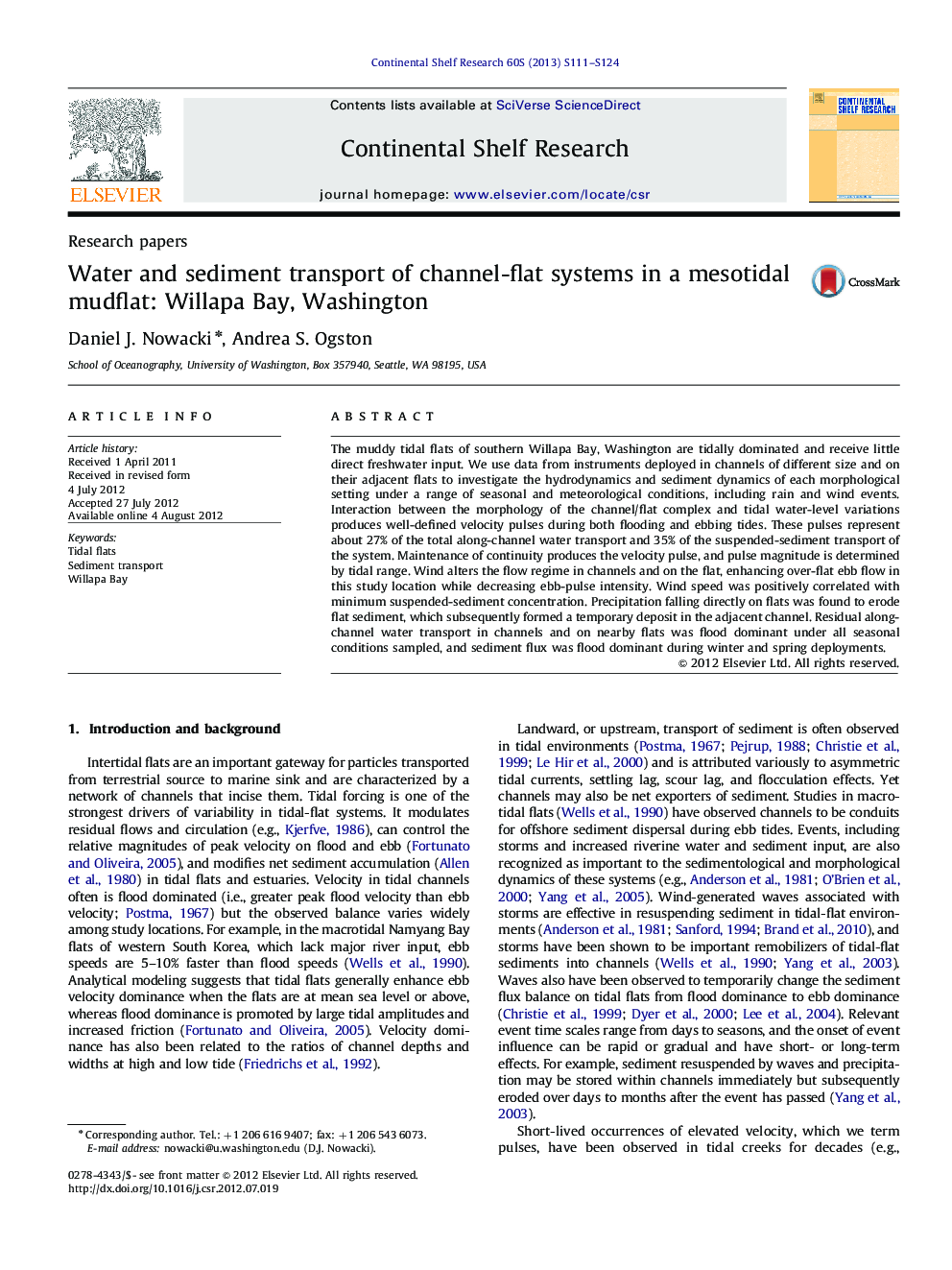| Article ID | Journal | Published Year | Pages | File Type |
|---|---|---|---|---|
| 4532162 | Continental Shelf Research | 2013 | 14 Pages |
The muddy tidal flats of southern Willapa Bay, Washington are tidally dominated and receive little direct freshwater input. We use data from instruments deployed in channels of different size and on their adjacent flats to investigate the hydrodynamics and sediment dynamics of each morphological setting under a range of seasonal and meteorological conditions, including rain and wind events. Interaction between the morphology of the channel/flat complex and tidal water-level variations produces well-defined velocity pulses during both flooding and ebbing tides. These pulses represent about 27% of the total along-channel water transport and 35% of the suspended-sediment transport of the system. Maintenance of continuity produces the velocity pulse, and pulse magnitude is determined by tidal range. Wind alters the flow regime in channels and on the flat, enhancing over-flat ebb flow in this study location while decreasing ebb-pulse intensity. Wind speed was positively correlated with minimum suspended-sediment concentration. Precipitation falling directly on flats was found to erode flat sediment, which subsequently formed a temporary deposit in the adjacent channel. Residual along-channel water transport in channels and on nearby flats was flood dominant under all seasonal conditions sampled, and sediment flux was flood dominant during winter and spring deployments.
► We measure water and sediment fluxes on a mesotidal mudflat. ► Along-channel residual water discharge is flood dominant. ► A morphological control on flow (tidal pulse) is an important component of residual discharge. ► Wind events increase sediment in suspension and enhance flood transport. ► Rain falling on exposed flats erodes sediment and creates temporary channel deposits.
